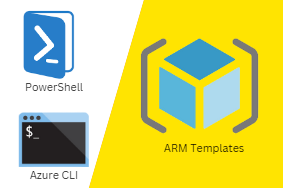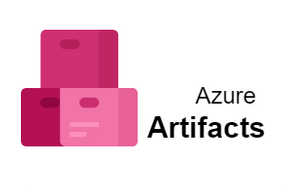Migrating to Google Cloud Platform (GCP) can be a daunting task if you are unfamiliar with the technology and its intricacies. It’s vital that you understand the process thoroughly before starting, as well as how much time you’ll need in order to complete the process successfully. This article breaks down every step of migrating to GCP and also includes helpful tips and tricks to ensure your migration goes as smoothly as possible.
Why move to Google Cloud?
As your business grows, it’s likely that you will be running more and more applications on Google Cloud. To ensure smooth operation, you’ll need to optimize data storage management by migrating your content to Google Cloud in an optimal way. But don’t worry! Our tips will help make sure that your transition is as seamless as possible. Here are some steps you can take to migrate your business without interrupting service or straining resources. Let’s dig in! If you’re not already familiar with Google Cloud, there are three key components to pay attention to: Flexible Architecture That You Can Scale Up or Down at Will Google Cloud offers flexible architecture from day one — something that many other providers may require their customers do via customization before use. With Google, scalability happens seamlessly through self-managed servers (VM instances) which means users choose how many servers they want based on their projected traffic volume and usage patterns (and pay only for what they actually use). This allows businesses to maximize server efficiency across multiple sites. Google engineers have streamlined infrastructure so that scaling up or down takes mere minutes instead of weeks. The result? Reduced infrastructure costs and better performance overall. For example, if your website becomes temporarily popular after being mentioned on a news site, Google Cloud enables you to quickly add new resources within seconds instead of waiting weeks for your provider to manually provision them for you. This gives Google’s competitors difficulty matching its speed of resource delivery — particularly during times when companies experience periods of peak activity such as holidays or sales seasons. Google understands that different workloads demand different infrastructure — for example, batch processing jobs should run on hardware optimized for CPU performance while real-time gaming apps should target graphics processor units (GPU) and not multi-core processors. Dedicated technical support staff can walk customers through any issues encountered during setup or expansion so they know exactly where to go whenever they need assistance. Unbeatable Security Google has security figured out like no other provider out there. Every project hosted on Google Cloud is encrypted end-to-end, meaning data protection begins when messages leave computers connected to its networks and ends once delivered to Google’s cloud services. Data travels between network points via state-of-the-art encryption protocols. Even outside of Google networks, messages remain protected thanks to Secure Sockets Layer (SSL), Transport Layer Security (TLS), Perfect Forward Secrecy (PFS), OAuth 2.0 and Google Apps Directory Sync built directly into products like Gmail. There’s even a robust audit trail available in case questions arise later. And that’s just getting started! Google also encrypts data at rest using Trusted Computing technology called Intel Software Guard Extensions (SGX) . Each VM instance is equipped with SGX technology that ensures virtual disks aren’t readable by hackers even if stolen; once created and transferred over to a Google datacenter, files remain protected unless an admin gives explicit permission for someone access rights.
Prepare your system before you migrate
Before you decide to migrate, prepare your system. Examine all dependencies on your current setup that cannot be easily replaced, such as third-party software or plugins with special functionality. Can you replace them with equivalent functionality in Google Cloud? If not, you may want to start thinking about migrating from traditional hosting solutions sooner rather than later. Also make sure that there is enough of your own time available for a project like this. It can take weeks or even months before all of your data has been migrated successfully. And once it is done, you’ll have to check whether everything works as it should. It’s generally easier to fix small problems at an early stage than big ones at a later one! But don’t worry – if something doesn’t work out, we will keep you up and running during your entire transition period. If you’re trying to switch over without shutting down operations entirely (in order to reduce downtime), we offer a feature called App Engine flexible environment replication. With replication enabled, any writes made against your running instances will be replicated automatically into a read-only environment that’s set up alongside production so any issues can quickly be addressed before flipping back into active mode again. Once replicate is configured and switched on for our platform – app engine automatically replicates writes into replica as well, giving read/write capabilities against replicas which allow engineers and developers test their apps locally prior to pushing code updates live into production.
Migrating your data to the cloud
No matter how many precautions you take, there’s always some risk associated with migrating your data to any new system. To minimize that risk, you’ll want to have a clear idea of what kind of data you plan to migrate before starting (think about size, format, security, whether it’s interrelated with other datasets). It’s also worth noting that —depending on your current storage setup—you may be looking at some hefty upfront costs. When planning your migration strategy, do not underestimate how much hard drive space will be needed; more than likely it will need to be outsourced or done in multiple phases. Be sure to factor those additional costs into your budgeting. If you’re leveraging an online migration tool like GCP Data Transfer Service, then cost is not a concern! All tools are provided as-is without warranty. This service is an especially useful way to move large amounts of data from Google Cloud Storage to BigQuery in order to speed up query processing. Doing so can improve user experience by reducing wait times and overall query execution time so users spend less time waiting for results. Another big advantage of using tools like GCP Data Transfer Service is reduced application latency when serving user requests since queries are completed faster. Because of these advantages, it’s easy to see why developers continue adopting managed services like GCP Data Transfer Service. There are three primary ways to use these migration services: import, export and copy.
What should I do when my site goes down?
If your site is down or you’re having trouble accessing it, it’s important to know what to do. Here are some steps to take: * Contact your web host. If your site is hosted by a company, contact them directly so they can handle issues with your server, if necessary. * Use Google Webmaster Tools: You can check on whether there’s an error showing up in Google Search Console (formerly Webmaster Tools) under Crawl > Crawl Errors. This will tell you about any errors encountered during the last search-crawling run of Googlebot and provide details about specific URLs that had problems. * Get more info using Fetch as Google: It’s helpful to see how your content looks from a user’s perspective—even better when done as closely to real time as possible. Using our fetch-as-Google tool allows you get information based on how Googlebot sees your content at its source rather than only being able to rely on information pulled from a cached version of your page.
Monitoring in GCP
GCP provides built-in monitoring.You can look at dashboards to view metrics, manage alerts, and get details about your Google Cloud Platform resources, as well as set up more advanced custom monitoring solutions. You can access GCP’s dashboard console through Google Cloud Console or via web browser: gcloud beta command line tool (CLI). Dashboard examples are also available in various programming languages.To learn more please see Monitoring Your Infrastructure. Failing over from one region to another region: The GCP has two kinds of resiliency options that you can use during an outage with no downtime : manual failover and automated failover. With manual failover, you have to drive all the changes to your application configuration yourself. With automated failover, you do not need any code change on your application; instead GCE drives all those configuration changes for you automatically after receiving a failure alert from another zone in same region.
Security considerations
Security is one of our top priorities, which is why we work closely with leading experts in information security. Data hosted on Google Cloud Platform (GCP) is managed by strict compliance standards that follow security best practices, such as ISO 27001. GCP adheres to industry-standard protocols such as FISMA, HIPAA, FedRAMP and CJIS, which require strong protection against potential data threats. Google Cloud Platform was built with several layers of security from application through physical design to ensure your data never goes out of your control. In addition to automated vulnerability scans performed by world-class teams of engineers, you can also configure alerts so you’re always notified when something changes with your infrastructure or when unusual activity occurs. For example, if any new IP address attempts a connection to an instance within your project, an alert will be sent immediately. You are given full control over who has access to what resources within your account using permissions and authentication mechanisms. However, instances are automatically patched for many well-known vulnerabilities with zero customer configuration—meaning you don’t have to worry about keeping up with software updates yourself. Strong encryption ensures nobody without authorization can access data at rest or during transmission. More advanced encryption options protect keys used during workloads running on Instance Store volumes from being exposed outside of VMs without disk encryption enabled where possible.



0 Comments